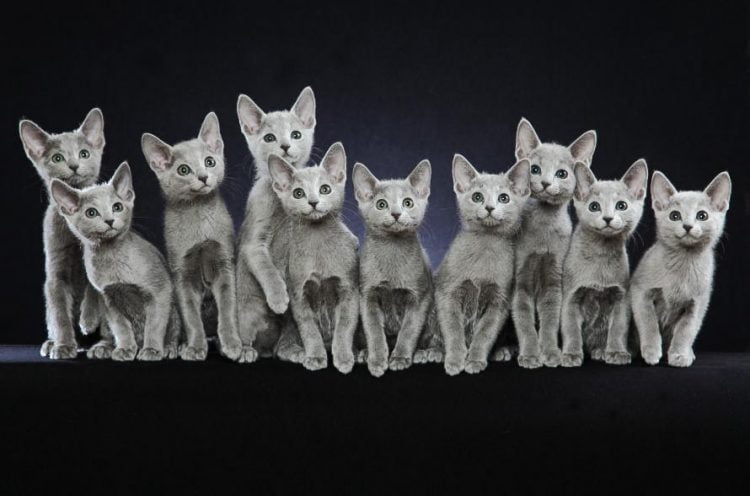In truth, the glamorous, pedigree, purebred Russian Blue is a black moggy from Russia. I am referring to the original cat, wandering around the streets of Archangel which is on the coast not too far from Murmansk which itself is close to the north of Finland. We are looking at a very cold landscape and climate.

It is a happy coincidence that the Russian Blue is blue because blue signifies coldness. But you can make a cat blue artificially. It’s quite easy with selective breeding. You just make sure that in your breeding line has cat which carries the dilute gene signified by the symbol d. The dilute gene is inherited as a recessive. You’d have to do a bit of inbreeding to arrive at your goal.
I would suggest, therefore, that the creator of this purebred cat decided that the cat should be blue and simply bred it. The cat’s appearance was refined somewhat to make it more elegant – less moggy-like. The process was controlled and organised and the end result is a icy blue cat from the north of Russia which is now quite popular.
In the 1970s a solid white Russian White was created by an Australian breeder (white signifying snow). The Russian Blue was informally imported into the UK and Europe from Russia in 1860 according to my research. The breed was shown at Crystal Palace Cat Show in 1875. Initially they were referred to as the Archangel Blue Cat by Harrison Weir who is the founding forefather of the cat fancy in England and therefore the rest of the world.

Genetics
The colour blue in cats is a dilute version of black. This transformation from black to blue is caused by the cat having the dilution gene. This gene ensures that the melanin producing cells called melanocytes in the skin distributes the pigment granules in clumps of varying size along the length of the hair shaft. “Segments of the hair may be very sparsely pigmented or even lack pigment altogether. To the human eye, this impairment causes the coat to appear ‘diluted’ as this effect modifies the colour to a lighter shade by allowing more light to pass through the hair”.
In cats homozygotes (two identical alleles of a particular gene – dd) to this allele black becomes blue and chocolate colour becomes lilac while cinnamon becomes fawn and red becomes cream. Interestingly, Robertson’s Genetics for Cat Breeders and Veterinarians tells me that this clumping of the granules in the hair shafts does not occur in the tissue of the eye which results in the eye not having a paler colour inline with the coat. The quote is from the same reference source.

